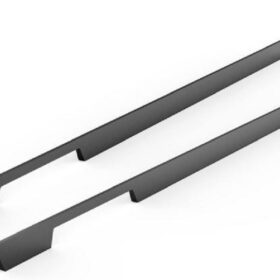Training Programs for Working with Aluminum Frame Sections
Introduction
Training programs for working with aluminum frame sections provide individuals with the knowledge and skills necessary to design, fabricate, and install these structural elements in various construction applications. Aluminum frame sections are widely used in commercial, residential, and industrial buildings due to their lightweight, high strength-to-weight ratio, durability, and corrosion resistance.
Key Aspects of Training Programs
Theoretical Knowledge
Material Science: Understanding the properties and behavior of aluminum alloys used in frame sections.
Structural Engineering: Principles of design and analysis for aluminum frames, including load calculations and code compliance.
Construction Techniques: Best practices for cutting, joining, and assembling aluminum frame sections.
Practical Skills
Cutting Techniques: Using saws, shears, and other tools to cut aluminum frame sections with precision.
Joining Methods: Welding, bolting, and riveting techniques for connecting aluminum frame sections.
Assembling and Installing: Proper procedures for assembling and installing aluminum frames in building structures.
Safety and Regulations
Workplace Safety: Identifying and mitigating hazards associated with working with aluminum frame sections.
Building Codes and Standards: Compliance with applicable building codes and industry standards for aluminum frame construction.
Environmental Impact: Understanding the environmental considerations and disposal procedures for aluminum frame sections.
Hands-on Experience
Workshop Training: Supervised practice in cutting, joining, and assembling aluminum frame sections.
Case Studies: Analysis and discussion of real-world examples of aluminum frame construction.
Simulation Software: Utilization of computer simulations to model and optimize aluminum frame designs.
Certification and Accreditation
Industry Certifications: Recognition of proficiency in working with aluminum frame sections through industry-recognized certifications.
Professional Development: Opportunities for ongoing education and training to stay updated with industry best practices.
Accreditation: Ensuring that training programs meet established quality standards and educational requirements.
Benefits of Training Programs
Enhanced Knowledge and Skills: Equipping participants with specialized knowledge and practical skills for working with aluminum frame sections.
Improved Safety: Minimizing workplace hazards and ensuring compliance with safety regulations.
Code Compliance: Ensuring that construction projects meet building codes and industry standards.
Increased Efficiency: Streamlining fabrication and installation processes to improve project timelines and reduce costs.
Career Advancement: Providing opportunities for individuals to advance their careers in aluminum frame construction.
Conclusion
Training programs for working with aluminum frame sections are essential for individuals seeking to gain the necessary knowledge and skills to safely and effectively design, fabricate, and install these structural elements. Through comprehensive theoretical knowledge, practical skills training, and certification opportunities, these programs empower participants to excel in the field of aluminum frame construction.
-
2024-11-29Top Trends in Modern Kitchen Cabinet Pulls for 2024
-
2024-11-28The Ultimate Guide to Modern Kitchen Cabinet Pulls- Materials, Styles, and Tips
-
2024-11-27Elevate Your Kitchen Design with These Must-Have Modern Cabinet Pulls
-
2024-11-26Sleek and Stylish- The Best Modern Kitchen Cabinet Pulls for a Contemporary Look










